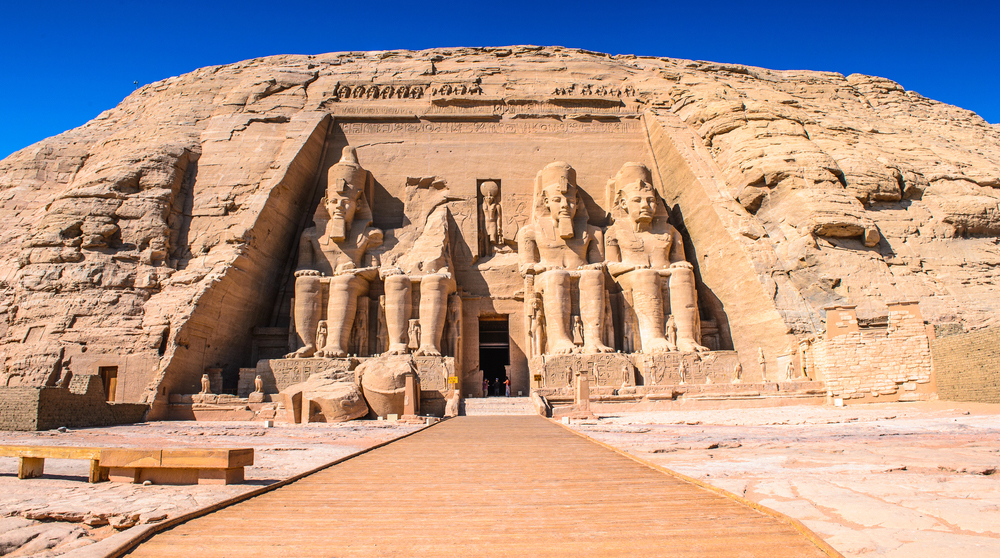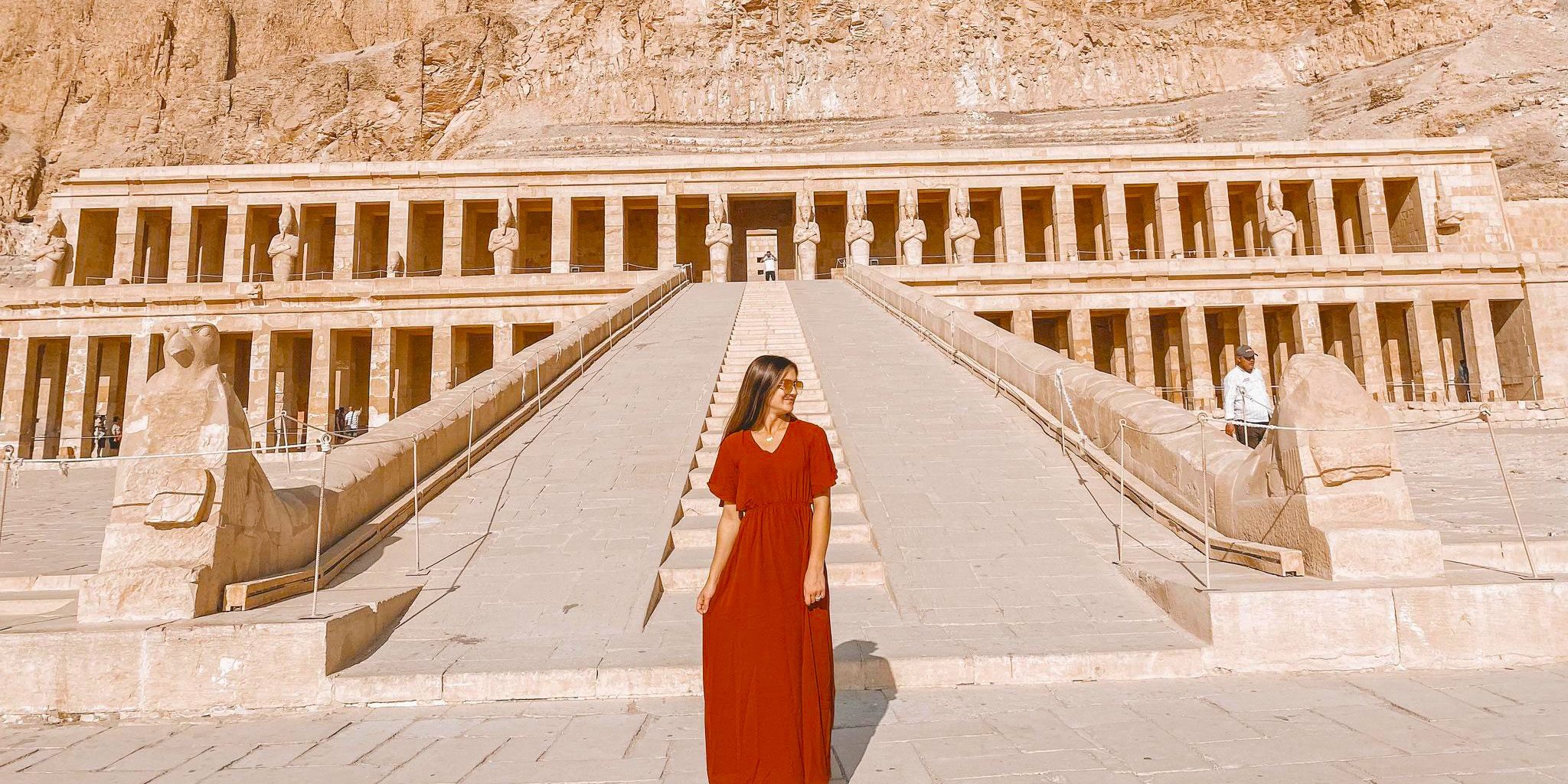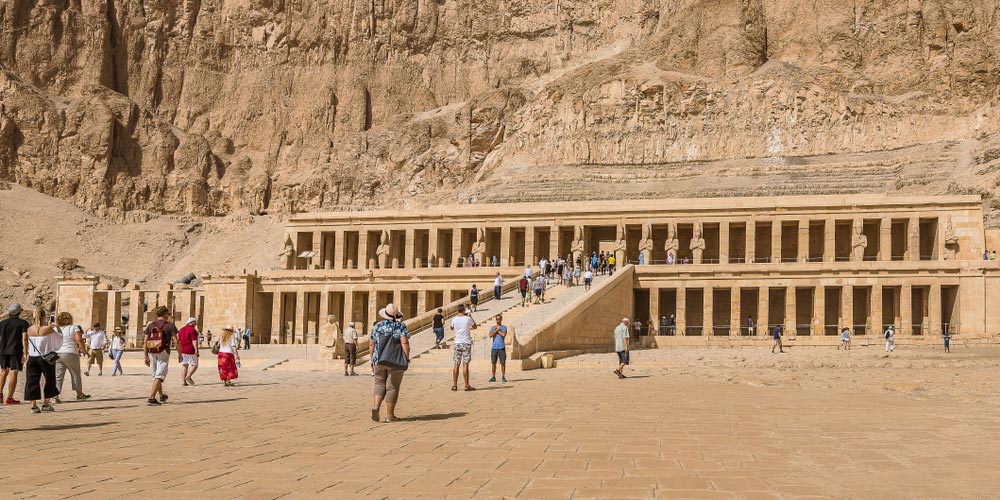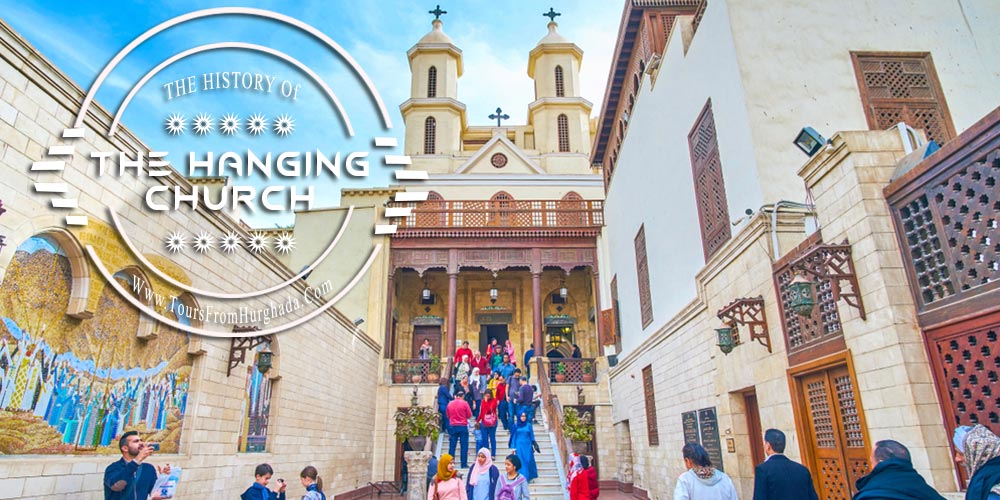Interesting Facts about the Great Sphinx
The Great Sphinx is one of the oldest and biggest sculptures ever created in the history of mankind. It is created out of a single piece of limestone and carved into a statue taking the shape of a famous mythical creature known as the Sphinx. The creature has the body of a lion and a human head to represent wisdom & power. The statue was painted with red pigment and some yellow and blue like a comic-book character. The Great Sphinx lies in a 240 ft. (73 m) long and 66 ft. (20 m) high space.
The humanoid statue takes complete control over the space, pumping it with infiltered glamour and great glory to entangle people with each of its slightest detail. Archaeologists and Egyptologists save a really great spot for the Sphinx in their hearts by coaxing one theory after another about its origins and the real beginning of its history.

The Location of the Great Sphinx
Among the ancient phenomena that took place with so many question marks wrapping around it, is the building process of the Great Sphinx and its mysteries. The Great Sphinx can be found sprouted in Giza Complex on the Nile River’s western Bank as a part of El Giza, Egypt, claiming three great pyramids as its, keeping an eye on them.
The statue has become the solidification of glory and mystery in the eyes of every traveler who comes to Egypt. Its mere location and posture caught lots of attention from travelers you’ll find it emitting might and sublimity at whatever angle you chose to look at it. Its history is treated as an enigma and a source of inspiration that illuminated the imagination of anyone who came across it over the millennia.

The Sphinx over the Different Ages & the Date of Its construction
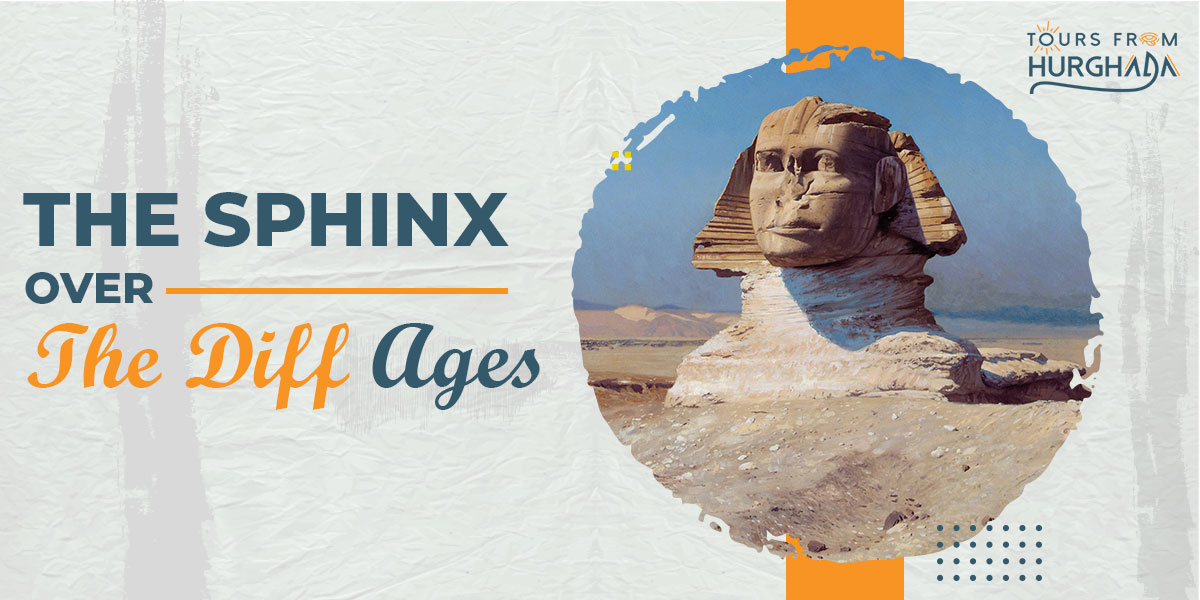
Lots of Egyptologists and historians linked the Great Sphinx with different ages. As, Selim Hassan, an Egyptologist of Egyptian roots, claimed that the statue was first welcomed over the course of the 4th Dynasty during the reign of great Pharaoh Khafre (2558 – 2532 BC) in the Old Kingdom (2686-2134 BC), but still, the exact date of the construction is still under debate. Then in the New Kingdom, there was made an excavation by young Thutmose IV, between the Great Sphinx’s front paws of a shrine that held inside the Dream Stele, a piece of slab made out of inscribed granite. It was alleged that the Stele links the history of the Great Sphinx with King Khafre until the revelation of Thomas Young, a polymath with lots of discoveries in the Egyptologist field, proved otherwise after analyzing a part of the Stele hieroglyphs. Further, in the Graeco-Roman ages, the Great Sphinx left other traces on minds when a group of Roman emperors visited the statue out of curiosity and political intentions.
And, there was clearly the accumulated sands covering the Sphinx in the 1st century as an honor to Neon, the Roman Emperor, and the Tiberius Claudius Balbilus, the Egyptian Government, and built a more-than-12-meter stairway among other structures. Hence, the stairway was destroyed as an aftermath of some excavations made by Émile Baraize, a French Egyptologist. Further, during the Medieval Ages, a group of ancients with multiple roots depicted the Great Sphinx as Horon, a Levantine god among the numerous gods worshipped back then in ancient Egypt.

The European Perspective on the Great Sphinx
Among the interesting, intriguing perspectives on the Great Sphinx are those that belong to European times from the 16th to the 19th centuries. As there was once a group of European analyzers, among whom came Johannes Helferich, Benoît de Maillet, among many others who suggests the Great Sphinx shares a lot in common with women’s features and physiques and. They related the Great Sphinx’s neck and face, and breasts with that of a woman.
On the other hand, André Thévet, the French priest, 7 years following his trip to El Giza, introduced his point of view on the Great Sphinx stating that the enigmatic creature is nothing but a colossus carved out at the hands of Isis. Then, either he or his engraver, came with another presentation about the Great Sphinx as a monster with curly locks and a neck collar of a grassy dog. It’s a conclusion that the Great Sphinx has been the subject of various people’s bewilderment and intrigue from the earliest to the latest time periods.

The Great Sphinx Names

The sphinx had many names across history, as in the New Kingdom it was called "Hor-em-Akhet", which means "Horus of The Horizon" and was heavily worshipped by the public, especially during the reign of Thutmose IV. And in the Greco-Roman period, the Sphinx had quite the resemblance to a Greek mythological beast with a lion’s body, a woman’s head, and the wings of an eagle called also the Sphinx.
However, during the 4th century of the Coptic era, it was known as "Bel-Hit", which means the guardian, but in today's terms, it is being referred to as Abu al-Hawl which means “The Father of Terror”. Each of the names mentioned has its own genre of people to stir their interest about where did it come from, even more, they might end up with their own titles to dress the statue with, whether they made sense or not!

The Cracks of the Great Sphinx Created a Part of Its History

Sometimes a blemish is meant to be just an object of belittlement and distortion with no attracting value anymore. However, when it comes to one of the most powerful and abnormally-built structures such as the Great Sphinx, there is some kind of plot twist. The Great Sphinx, having been standing its ground since around 2500 BC, has cracks that added more to its value and caused lots of analyses about what could have been the reason. Yet again we guess the cracks are another unique part among the other numerous parts we mentioned and will be mentioning later about the genuine history of Egypt. However, the following are the two cracks and the missing pieces that went viral among leisure travelers, locals, and even Egyptologists with lots of theories around them:
1. The Great Sphinx Nose
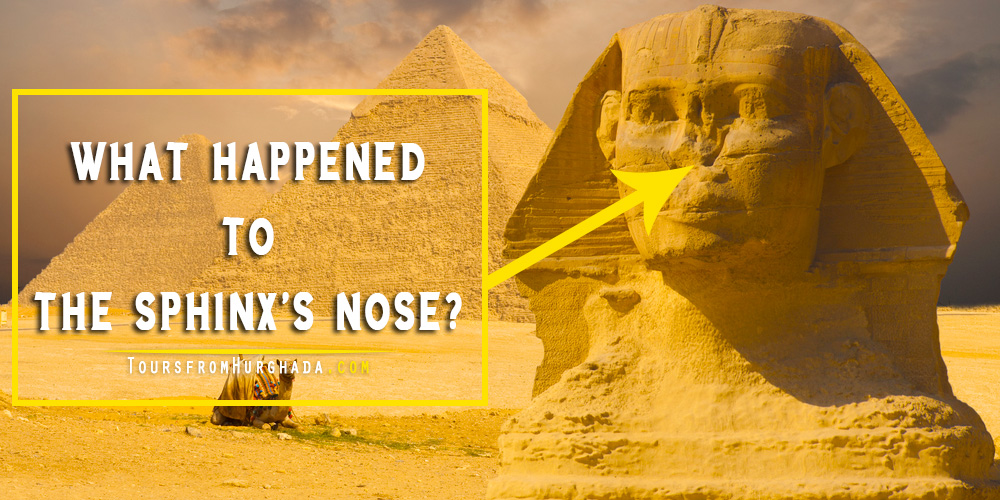
The Great Sphinx has a big question mark due to its famous nose. Many hypotheses & theories attempted to explain his nose phenomenon, but only two were under consideration. Some scholars believe it was destroyed by Napoleon’s troops in 1798-1801 CE, but it was proven wrong, as a famous drawing by a French artist called Frederic Luis Norden in 1737 showcases the destroyed nose, forty years before the arrival of the French forces. The most acceptable scenario about the Great Sphinx nose is being crushed in the Arab Invasion during the 7th century or by a Muslim cleric in the 14th century. But as always, some other people prefer to build up their series of funny and silly conclusions about the Sphinx which are appreciated yet ignored at the same time.
2. The Great Sphinx Long-forgotten Beard
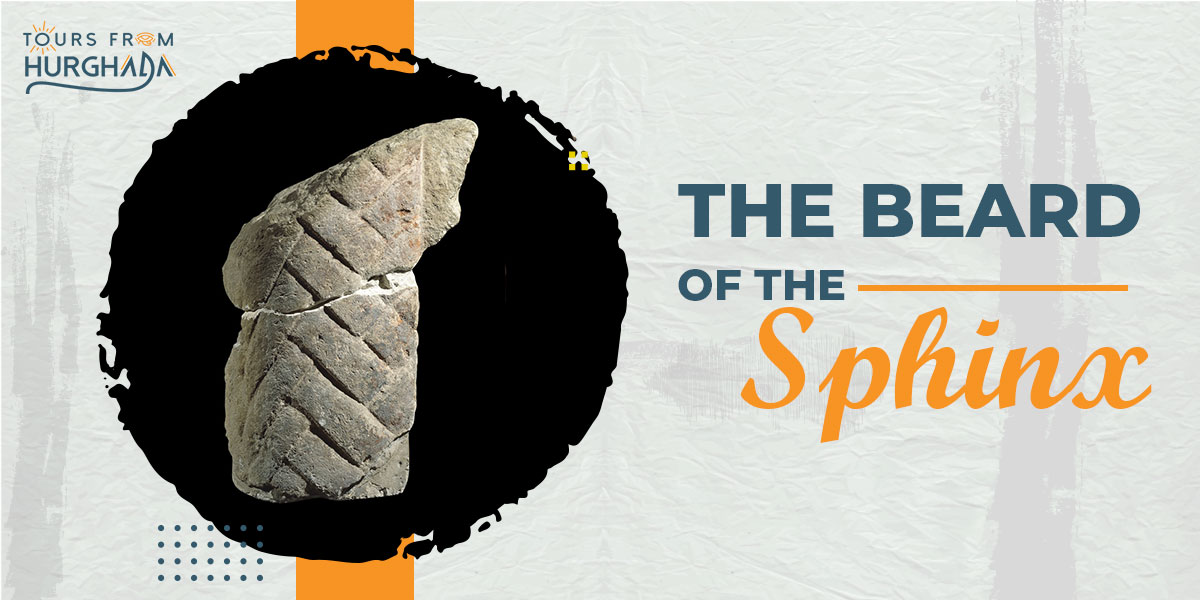
Apart from its missing nose, the Great Sphinx also used to have a splendid beard attached as a sign of divinity. The beard was suggested to be carved periods later after the Great Sphinx was totally built, presenting to the world a one-of-a-kind phenomenon. It’s a suggestion supported by Vassil Dobrev, an Egyptologist of French ethics, in his statements about the Great Sphinx’s bread. According to the French Egyptologist, if the bread was originally carved as a part of the Great Sphinx, the chin must have had a vivid, severe deformation the moment it comes into contact with the ground. However, his point was proven right, to some extent, when it was confirmed the little-to-nothing deterioration trace of the Great Sphinx’s chin.

More about the Great Sphinx from the Egyptologists’ Points of View
The endless stream of Egyptologists’ points of view about the Great Sphinx keeps pulling on Egypt’s mysteries for all the world to see and relish in the conclusions, and one of them is the Auguste Mariette theory. Auguste Mariette is the architect of the one and only; Cairo’s Egyptian Museum, who came in 1857 with the discovery of the Inventory Stela that brought up the meeting between King Khufu and the Sphinx which was buried deep in the sands back then. The piece of stela does mention decisive facts, but it also has a share of invalid facts that came to doubt the origin of the Great Sphinx. Flinders Petrie proposed his point of view about the exact age of the Valley Temple of Khafre, discussing a doubted possibility about the temple might have been built before the Fourth Dynasty. However, his proposal was met by opposing recent theories to prove otherwise. Another point of view provided about the Great Sphinx belongs to Gaston Maspero, the second manager of the Egyptian Museum and a French Egyptologist, that also suggests the Great Sphinx was carved before the reign of Khafre and it’s the oldest milestone ever built in Egypt.
For Ludwig Borchardt’s point of view, he dates the roots of the Great Sphinx back to the Middle Kingdom, assuming the face of the statue looks the same as Amenemhat III’s. E. A. Wallis Budge’s perspective is also included among the interesting theories about the Great Sphinx, as he concluded in “The Gods of the Egyptians”, a book he wrote and went viral, that the Great Sphinx belongs to a prior period before King Khafre took the lead of the reign. and as a wrap, the Egyptian Egyptologist, Selim Hassan, suggested that building the Great Sphinx is a huge process that took place after the Pyramid of Khafre was totally erected.

The Mystery of The Great Sphinx
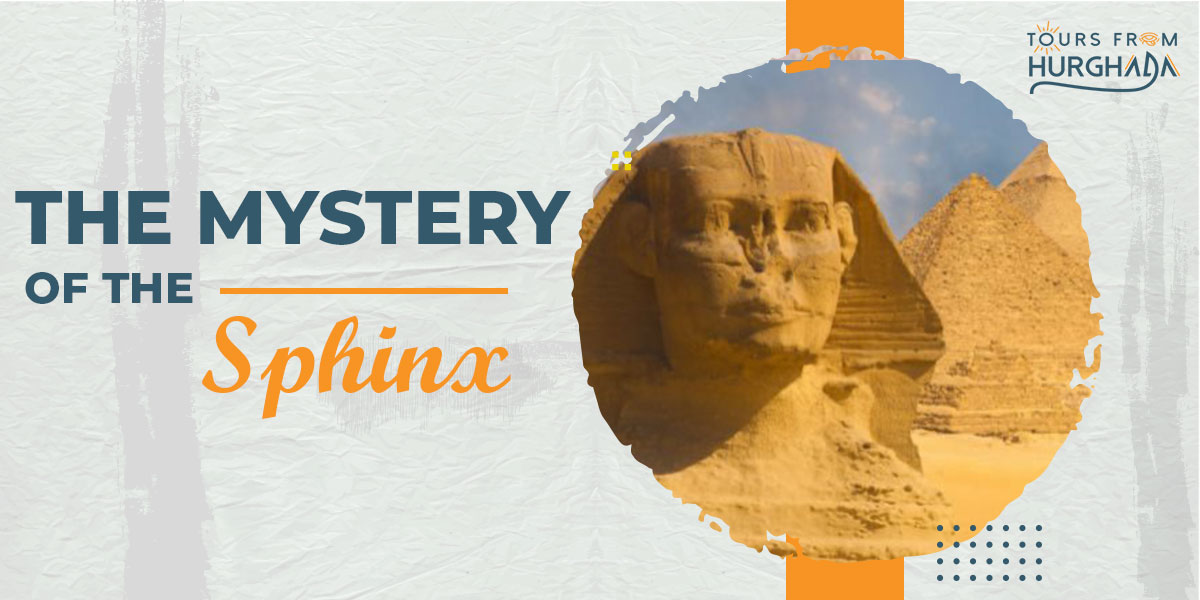
As it is obvious by now, ancient Egypt with all the landmarks it has and all the extremely interesting stories it tells, managed to blend among the most powerful cultures in history with lots of thoughts around it. And the Great Sphinx, if anything, has always been a part of ancient Egypt, yet a large stone that built its culture. That’s why, over the centuries, there have been many hypocrites that put the Great Sphinx under a never-ending debate due to its mysterious nature.
The statue had been damaged and restored various times over the millennia and there were no documents of any kind in the Old Kingdom providing any information about its age or manner of construction. This led many archeologists and Egyptologists to debate its origin and even came up with countless theories that had a fringe nature like the Orion Correlation Theory, the Water Erosion Hypothesis, or the Anubis-Sphinx Theory.

The Great Sphinx Revival
The missing pieces and cracks that shaped a part of the Great Sphinx’s history are also met by a number of restorations and revival processes to shed light on the Sphinx even more. As there was a group of Egyptian engineers, in 1931, who revived the head of the Sphinx after a part of its Nemes came into contact with the ground in 1926 caused by erosion.
The accident caused a great part of the neck to be deeply distorted. The process was done with the help of a made-out-of-cement collar tying the neck with the Nemes, and was followed later by a number of other repairs on both, the base and the body, in 1980 then again in the 1990s. However, no matter how many ups and downs the Great Sphinx as a building went through, it’ll never do harm to the impact it has on the minds of travelers. And all are proofs of how much Egypt treasures its great figures and honors the trace they left behind.

The Great Sphinx Always Has Been a Subject of Controversiality for So Long

The wide range of hypotheses bout the Great Sphinx never stops, not when Rainer Stadelmann, the German Archeological Institute in Cairo’s former officer, analyzed the Great Sphinx’s iconography of both the head as well as the missing beard and concluded they fit exactly with Khafre’s style. He was insistent enough to turn heads to Khafre Causeway and the fact it was established to fit an already-existed structure inside, which by the looks of it, serves the Great Sphinx’s structure just right. Even more, in 2004, came Vassil Dobrev, who belongs to the Institut Français d'Archéologie Orientale in Cairo, and proposed that Djedefre, Khafre’s son, carved the Great Sphinx with his father in mind and depicted the statute as Ra, the Sun God to resort the honor of the 4th Dynasty.

The Great Sphinx in Egypt’s Tourism
The Great Sphinx and its impact on Egypt tourism should be mentioned among the important information about the Great Sphinx. As a milestone open for different discussions and a variety of interpretations, the Great Sphinx controls people around in a way that not only leaves them under the effect of its hypothesis but also gets people to follow their curiosity, come, see and analyze its existence in person while judging which allegations feel the most logic. Which is a powerful factor to upgrade tourism in Egypt on its own.
A visit to the Great Sphinx will guarantee you sights of the Three Great Pyramids that it grew to take care of. It’s a superb package that links together a glorious statue with three of the most massive structures in the world and displays more significance about Egypt. With each of the statutes having its own share of theories built upon it, your trip to the square space of El Giza Plateau will definitely be on another level of grandeur. Your visit will for sure be worth the money you’ll invest.

Conclusion
Tours from Hurghada is our agency that’ll make you dance on the lines of ancient history with seamless steps and a smooth rhythm like never before. It’ll offer you ancient traces drawn by the greatness of the pharaohs and the sublimity of their accomplishments, making you tour and tour until you’re full. We’ll upgrade you to the fanciest levels wherein you’ll pick up every piece of the ancient civilization as it should be.
Further, we’ll offer you scales of grace created by our out-of-this-world services from fabulous accommodation and the private transition to high-quality time management, utter safety, and many more others. So don’t let hesitance cloud your mind and give us a chance to prove our determination in making you beyond satisfied.
From: $300/Per Person
2 Days - 1 Night
2 Days Luxor & Abu Simbel Trip from Hurghada
Enjoy 2 Days Luxor & Abu Simbel Trips from Hurghada joined by a professional Egyptologist tour guide and ...
From: $370/Per Person
2 Days / 1 Night
Overnight Trip to Cairo from Hurghada By Plane
Private overnight trips to Cairo from Hurghada by plane to visit the most famous historical and cultural ...
From: $220/Per Person
2 Days / 1 Night
2 Days Trip From Hurghada to Luxor
A private 2 days trip from Hurghada to visit Luxor temple, Karnak temple, Valley of the Kings, Queen Hats...
From: $370/Per Person
2 Days- 1 Night
Two Days Cairo and Luxor Trip from Hurghada
Enjoy a gorgeous two days Cairo & Luxor trip from Hurghada to visit the best attractions of Pharaohs, the...


